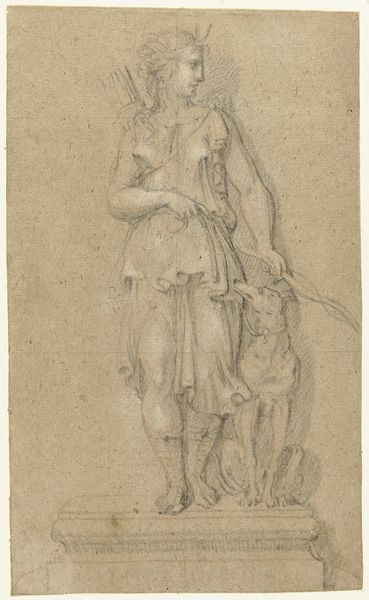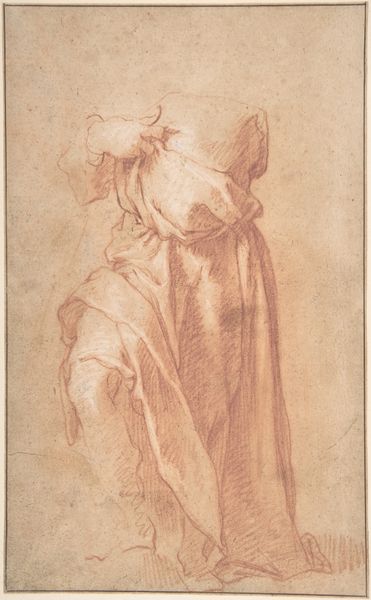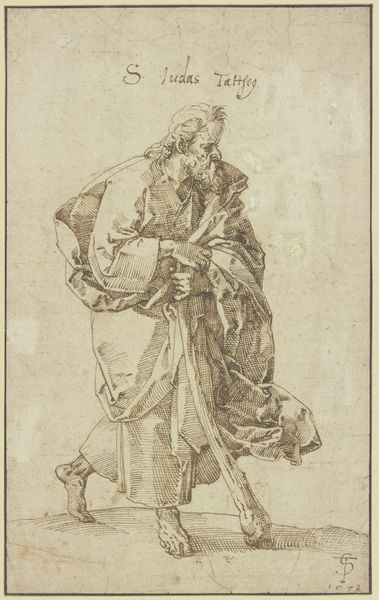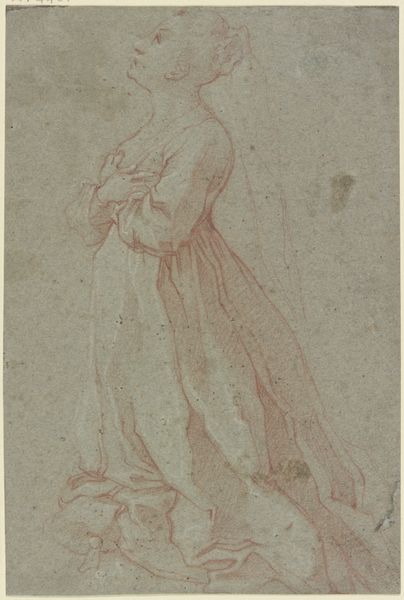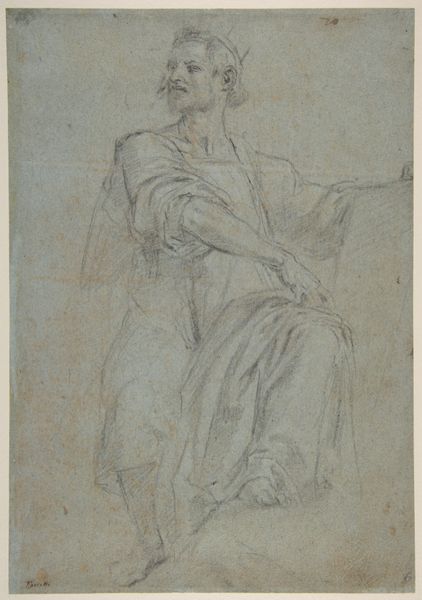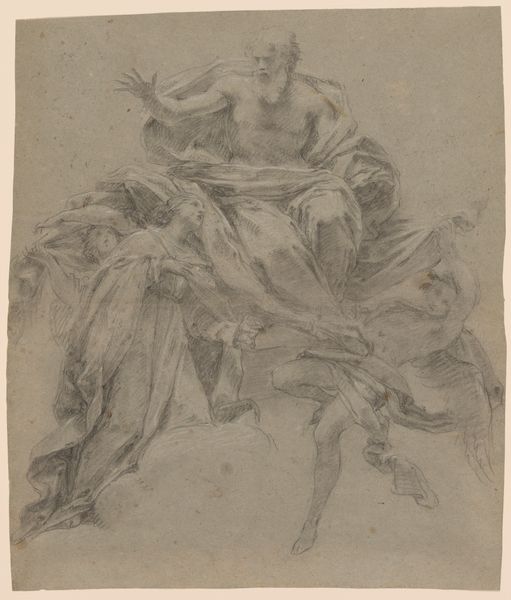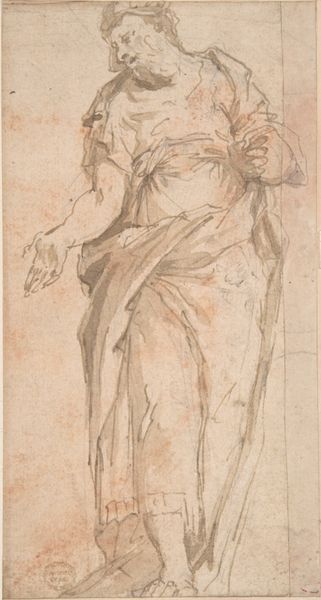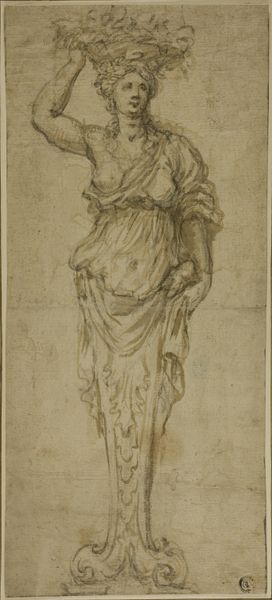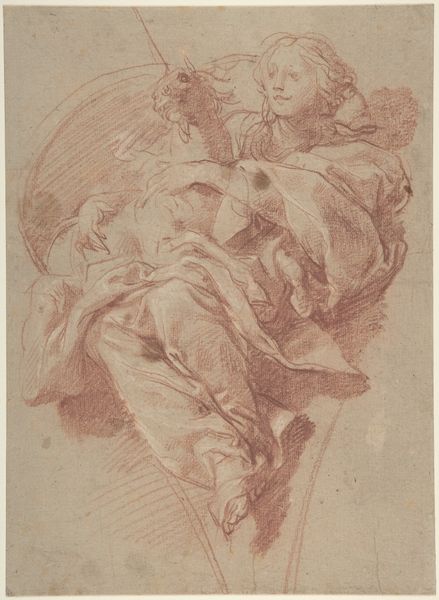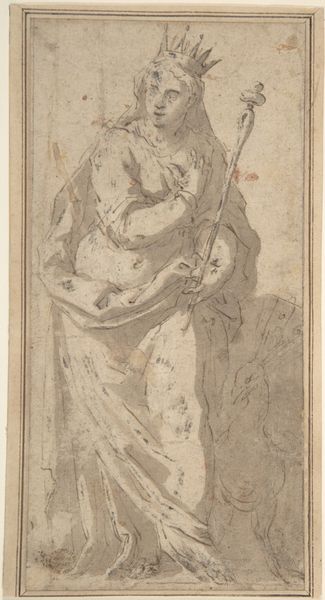
drawing, print, intaglio, engraving
#
drawing
# print
#
intaglio
#
figuration
#
form
#
11_renaissance
#
pencil drawing
#
line
#
engraving
Dimensions: 7 15/16 x 5 3/16 in. (20.2 x 13.2 cm)
Copyright: Public Domain
Curator: Allow me to introduce "Kneeling Female Figure," an engraving attributed to Master MZ, dating from approximately 1497 to 1525. It’s currently housed at the Metropolitan Museum of Art. Editor: The overwhelming feeling is of humble supplication. The stark line work almost makes the figure seem ethereal. Curator: It’s a striking use of line, certainly. Notice how Master MZ uses hatching and cross-hatching to build volume and to define the folds of her drapery. It’s not just descriptive; it adds a certain dynamism. Editor: I'm interested in that drapery. The meticulous rendering almost elevates the textile to a status equal with the figure. One might consider the sources for such cloth. How accessible was it? Does this connect her with wealth or patronage? Curator: Intriguing thought. Looking at the formal elements, the figure's posture creates a compelling interplay between tension and relaxation. Her upward gaze is offset by the grounded weight of her kneeling form. There’s a clear compositional strategy to direct the viewer’s eye. Editor: And the scale of the engraving. A work meant to be held and closely scrutinized; consider the social function of this image. Perhaps reproduced in multiples, influencing aesthetic sensibilities for common devotional or personal items? Curator: Possible. There is, without question, a potent spiritual element at play here, amplified by the precision of the medium. Every line serves to reinforce the piety of the subject. Editor: Right. But this piety has been constructed through the manipulation of copper, acid, and the artist’s physical labor. This highlights not only an ethereal expression of faith, but the hands, the workshops, and the market practices which helped construct such images of femininity. Curator: So, you're saying this print opens avenues for contemplation on not just form, but the forces behind artistic creation in the Renaissance? Editor: Precisely. Art as a product. Curator: I concede your points provide another layer of understanding, one extending beyond a purely formalist reading. Editor: And that the materiality here suggests new perspectives on familiar notions of religious piety in Renaissance society.
Comments
No comments
Be the first to comment and join the conversation on the ultimate creative platform.
